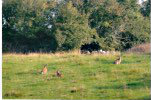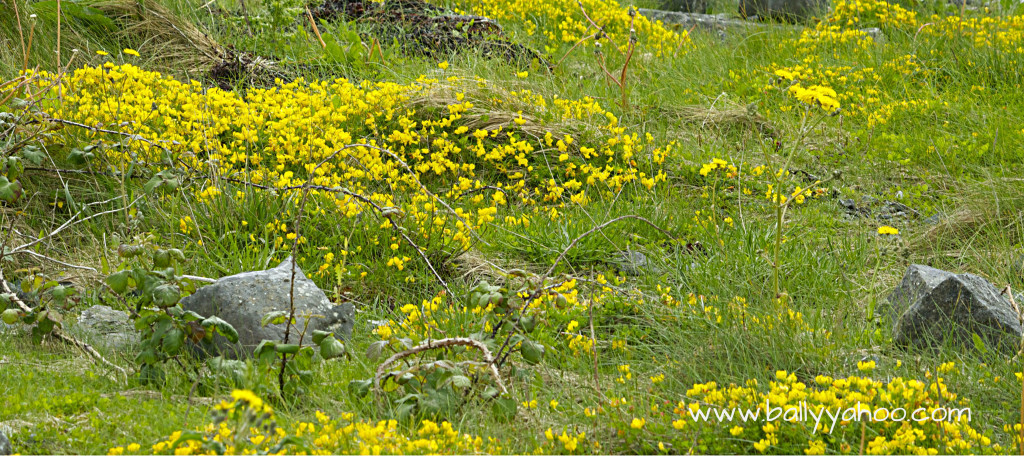Wild Irish hares have been living in Ireland for a very long time.
However, not that many people have seen them as they tend to keep their distance, as you can see in the photos here.
 Maggie-many-cats took the two photographs on this page.
Maggie-many-cats took the two photographs on this page.
She was trying for weeks to get closer ones but the shy hares kept running away.
They can be hard to see, as their reddish brown colour can merge into the landscape.
If you are lucky enough to spot one you can recognize them by their fluffy white tails.
In the winter, their furry coat changes to a grey brown colour.
TOE BY TOE
You probably won’t get close enough to see their feet as they are shy creatures.
If you were lucky enough to get close, you would notice something quite unusual.
You see hares have five toes on the fore foot and only four on the hind foot.
 The fifth toe on the fore foot doesn’t leave a print behind.
The fifth toe on the fore foot doesn’t leave a print behind.
If you counted the toes from their foot prints you would think there were only four toes.
WILD IRISH HARES OF BALLYYAHOO
Like most Irish wild hares, Ballyyahoo hares are usually found in grassy fields near the beach, or in the fields around the town.
There are a few of these wild Irish hares in the field behind the town’s Gardai (police) station.
Sergeant Sid has threatened to arrest them for speeding many times.
Lucky for them, Sergeant Sid hasn’t a hope of catching them as they can run at 35 miles per hour.
Sergeant Sid is always so stuffed with sweets that he can only manage about a mile and a half an hour, and that’s only if the wind is behind him.
Unlike Sergeant Sid who eats mainly sweets, crisps, chocolates, cakes, biscuits and chips, wild Irish hares are herbivores.
This means they only eat vegetation – no meat and they tend to eat what is near and available to them.
So, when there is lots of grasses, herbs and heather around they will devour that.
In colder seasons they will eat wild fraughans (bilberries) which are the first wild berry to ripen after winter. They also eat gorse.

TWO HOMES FOR A HARE
The hare doesn’t burrow underground the way rabbits do.
They live in dens on the surface of the ground.
These dens are called forms and the hares make them by digging a shallow hole in the ground where there is shelter from rocks, long grass or shrubs.
They often have two forms – one is used in the daytime and is near where they forage for herbs and grasses.
The other form is used at night.
The two places are linked by trails and if you ever see a trail of flattened grass, that just might be the path between a hare’s two forms.
So stay quiet near these paths and keep your eyes peeled because you just might be lucky enough to spot a real live hare.
HARE BABIES
Hares are very unusual creatures, not just because they have odd toes and can run like the wind but also because the females can be pregnant with a second litter of babies while still carrying the first.
LEVERETS
Female hares can produce up to three litters a year and there could be four babies in each.
Baby hares are called leverets.
They grow up really fast and are weaned and ready for adult life after just three weeks.
They live up to nine years.
If you come upon a group of wild Irish hares in March, or any other time during their breeding season (which starts in January and goes up to August) you just might see them jumping up and down and running in strange directions.
You might even see two hares standing on their hand legs boxing at each other.
Hares tend to fight and play like this during the breeding season and the expression ‘mad as a march hare’ is said to have come from their strange antics.
For some fun stories from Ballyyahoo click here.
Ballyyahoo – encouraging children to love nature.










Comments are closed.